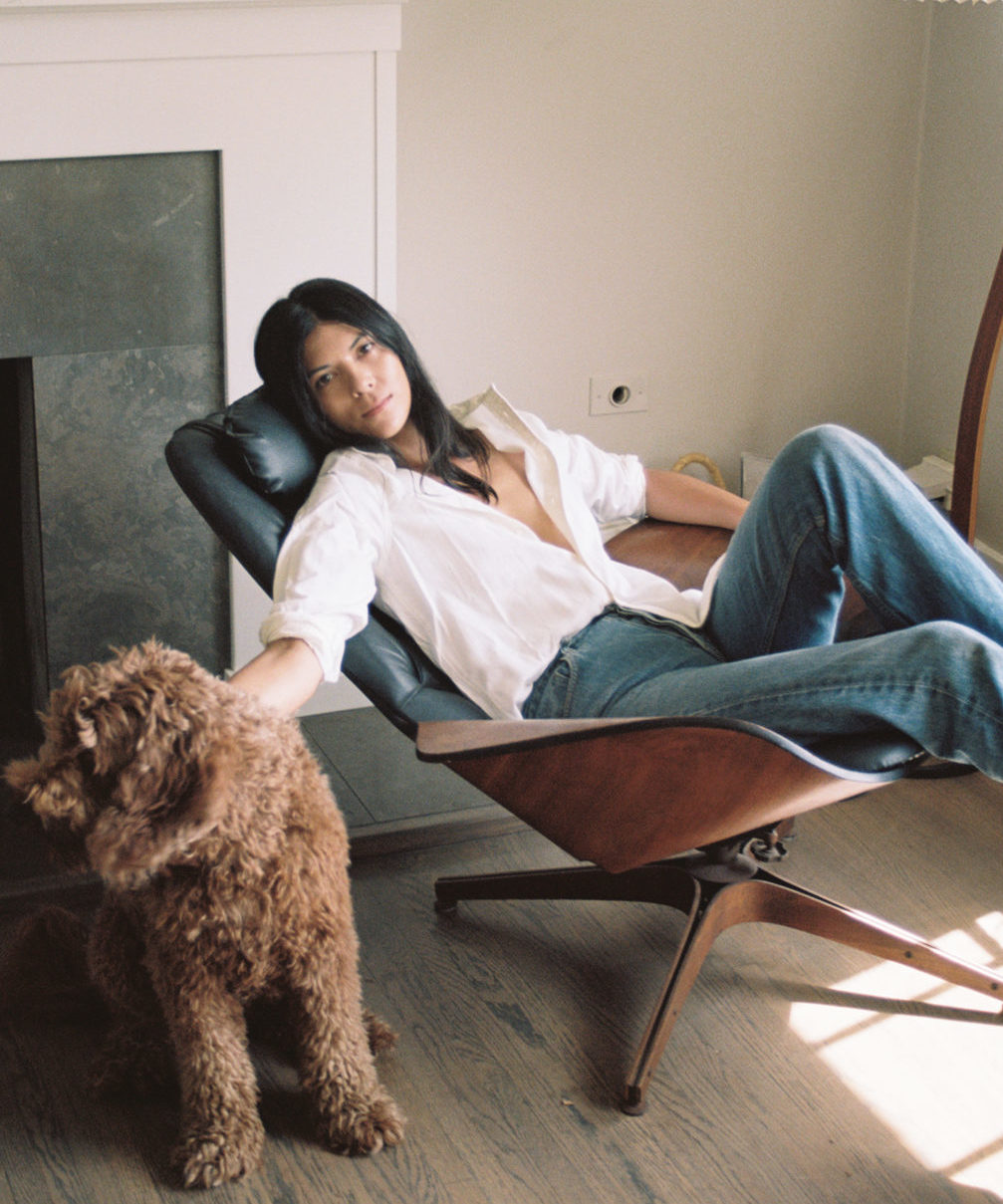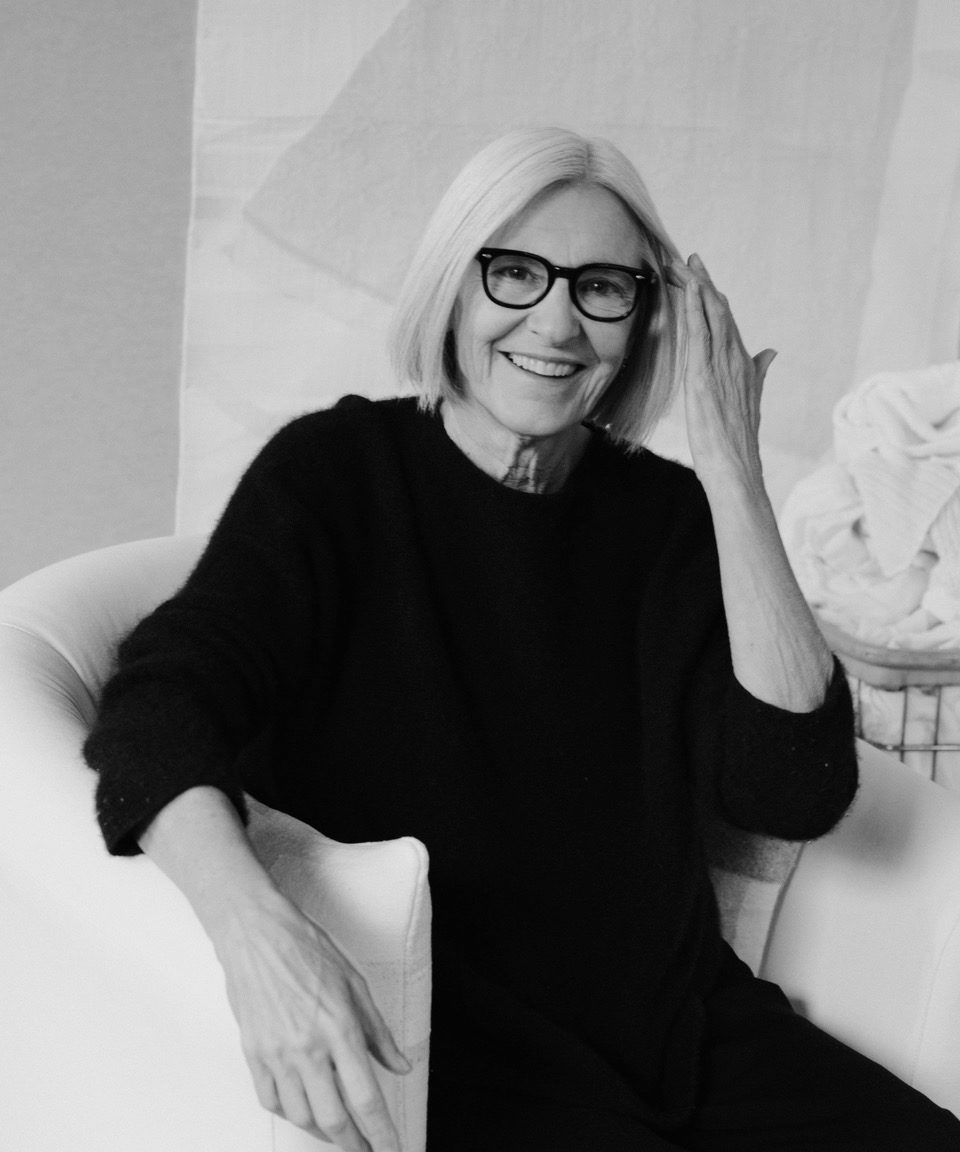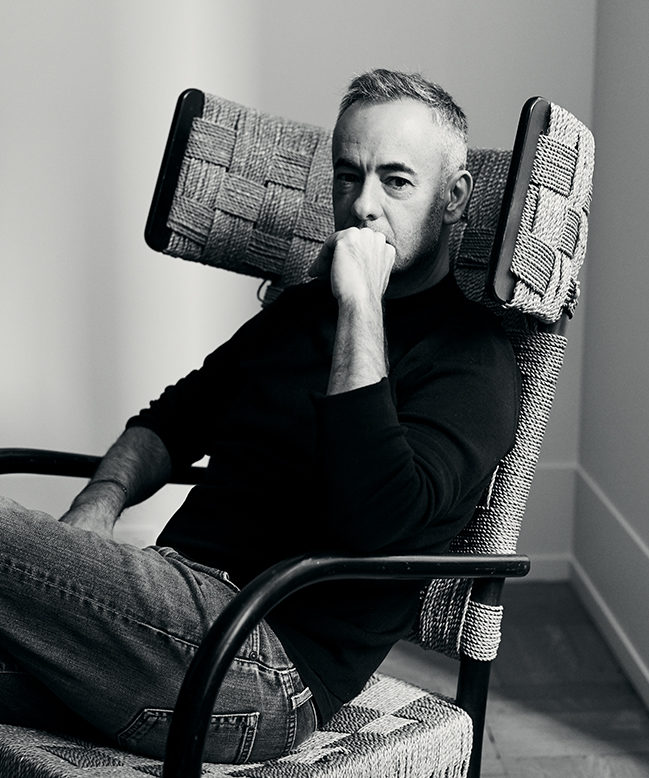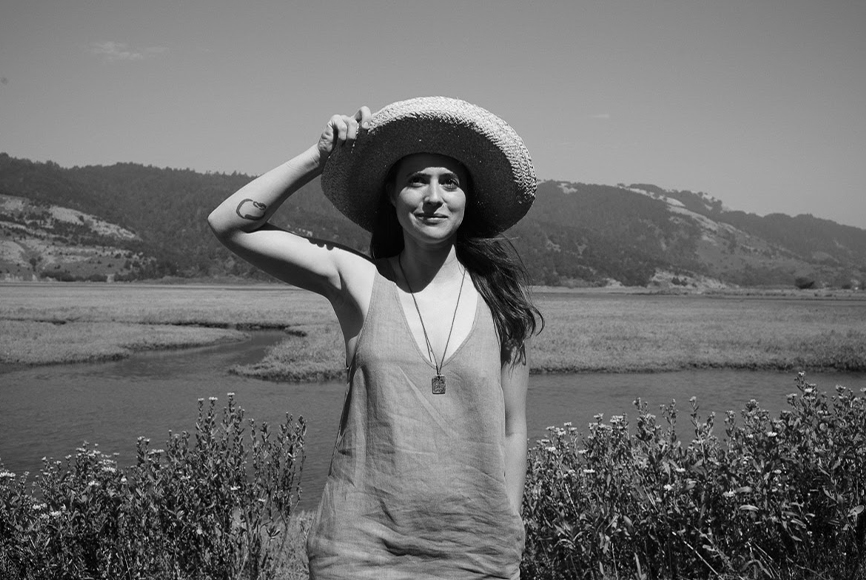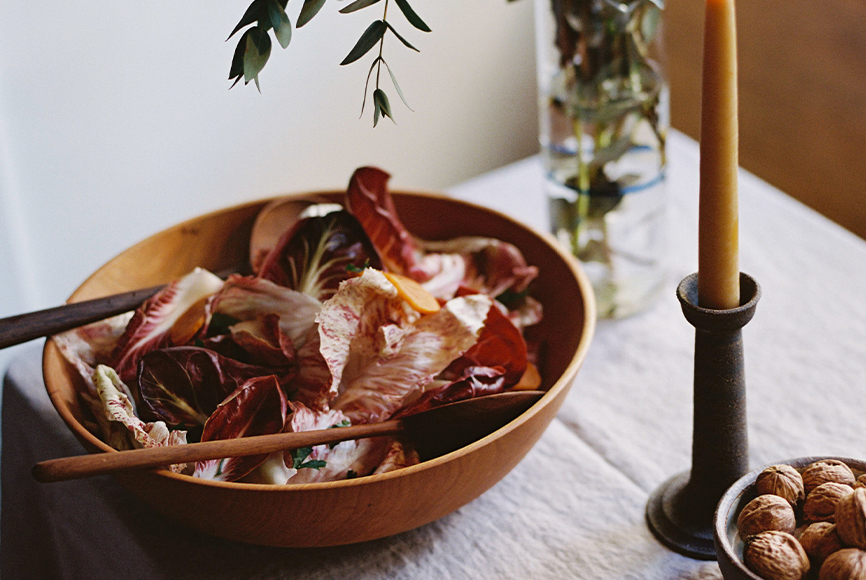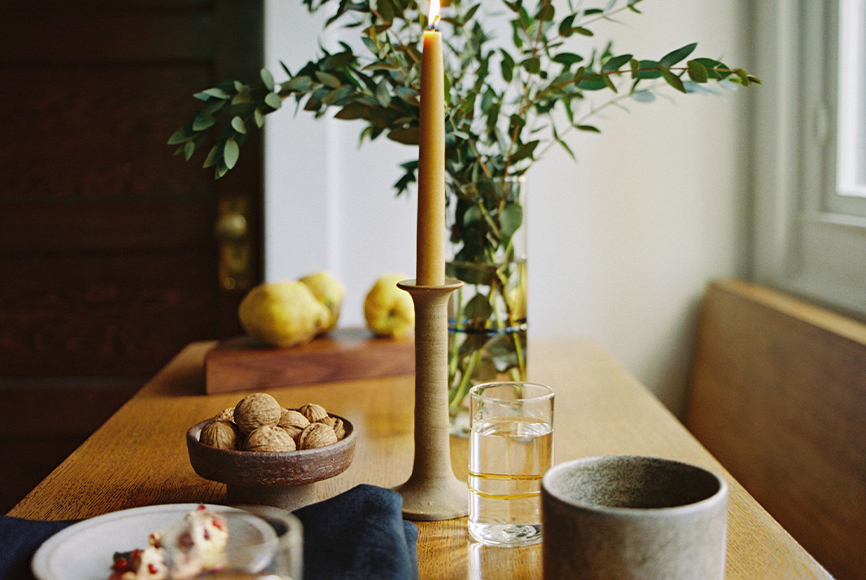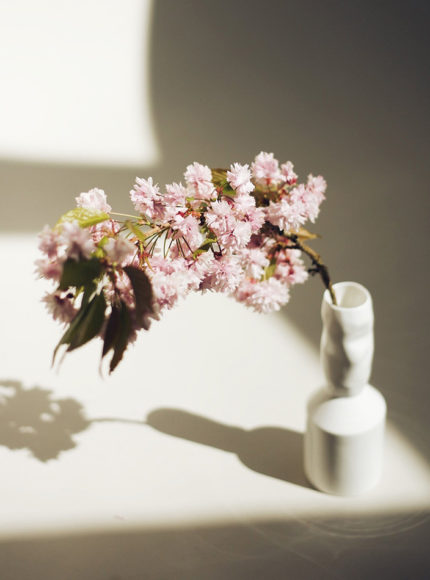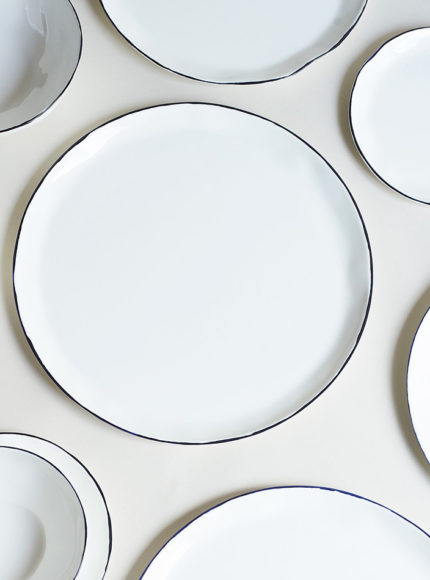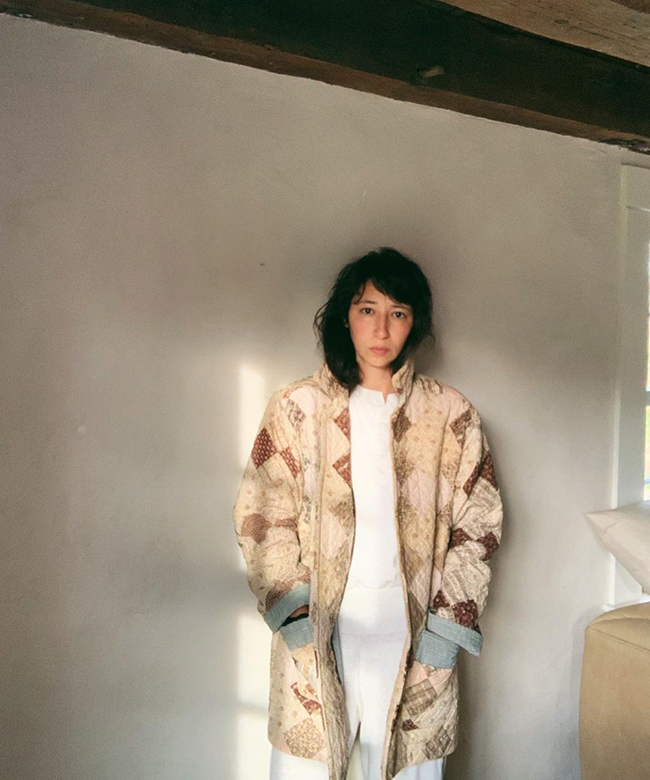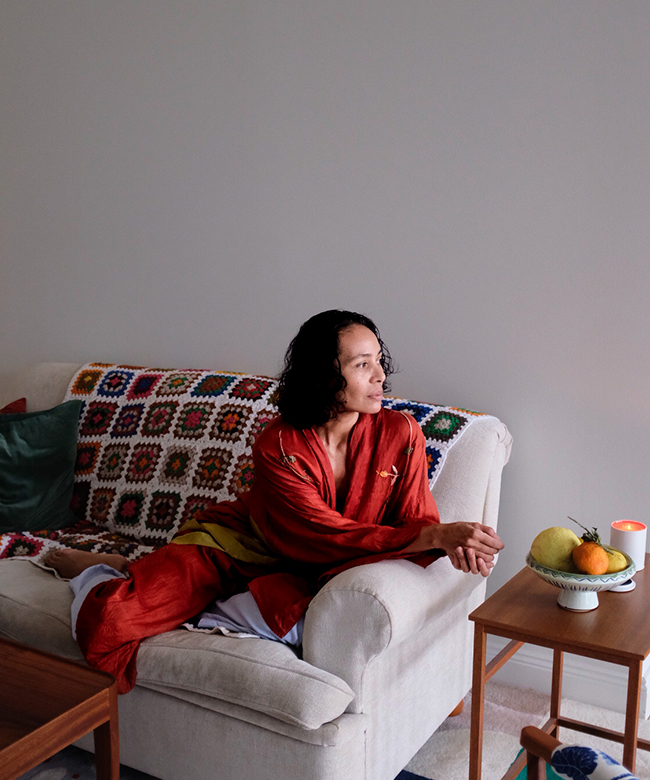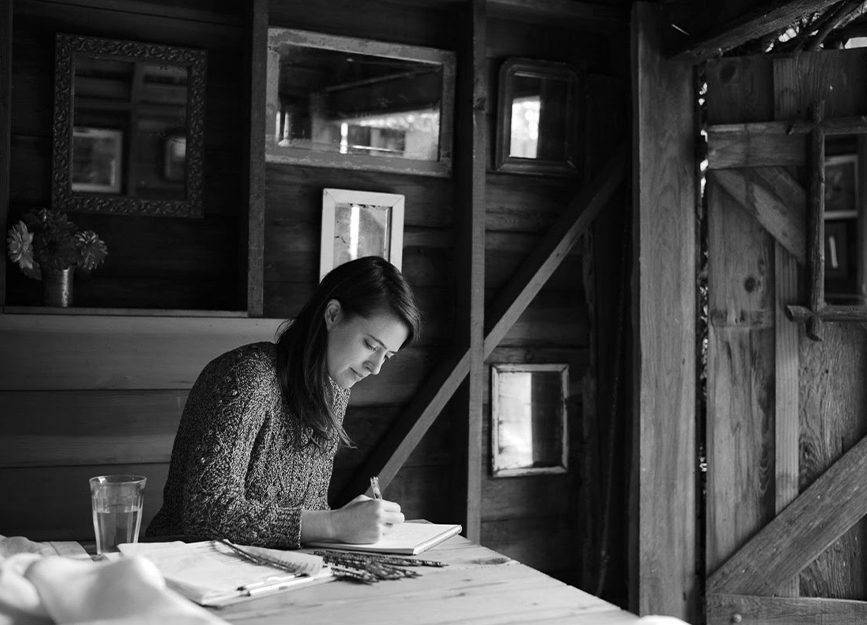

Brigitte Lacombe
Justin Chung
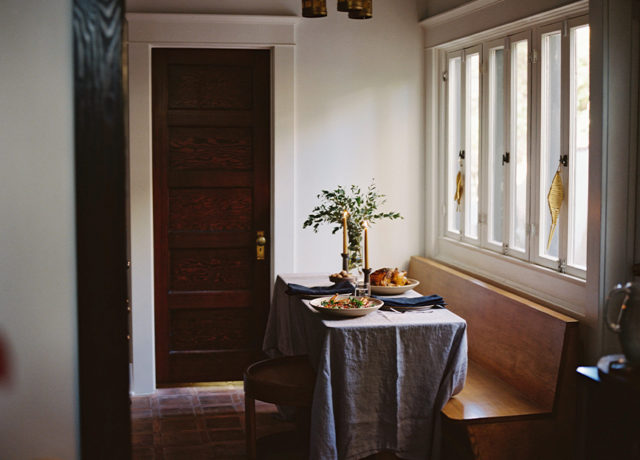

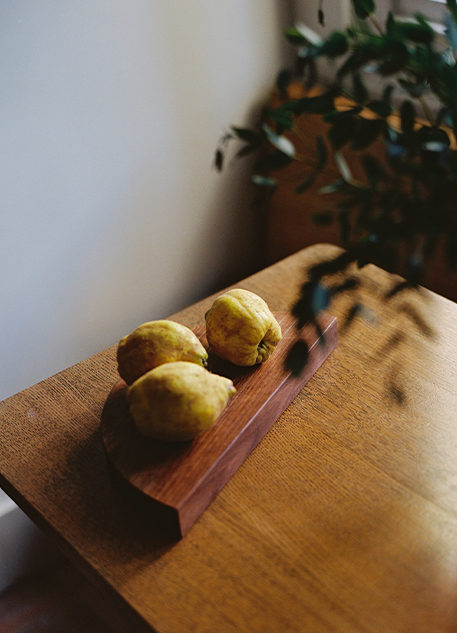

Justin Chung
Food & Garden
Slow Living with Fanny Singer of Always Home & Permanent Collection
We welcome Fanny Singer to talk about her new book Always Home. Inspired by time spent in the kitchen with her iconic mother, Alice Waters, and her sustainable homeware line, Permanent Collection! Fanny talks about her inspiration for slow living and also the importance of supporting regenerative farming.
Color photos by Justin Chung, black & white photos by Brigitte Lacombe
“Whatever object has been deemed worthy of acquisition has been measured according to a rubric of timeless value, eternal relevance, and beauty.”
– Fanny Singer
Our interview with Fanny Singer…
First of all, can you tell us about your goals when it comes to living a slower lifestyle?
I’ve always been someone who has 100 professional irons in the fire at once. I wear a lot of hats. From founder of Permanent Collection, to art critic, to recipe developer, memoirist, cook, art historian, etc. What I really hope is to pare down this professional landscape. And to focus on those things that are really nourishing to me, giving them my (much less divided) attention.
Can you tell us a bit about what inspired you to co-found Permanent Collection?
All my time studying art (I have a PhD in art history) and looking at objects and thinking about what gives something enduring, time-defying qualities, made me curious to see if I could develop a line of objects that contained within them those same attributes. Growing up in my mother, Alice Waters‘s household also helped form my aesthetic sensibility. She is very particular about beauty, and about quality, and very rigorous in her approach to design. Having always loved the slowly-acquired, antique pieces in her kitchen collection as a child. A natural inclination, I suppose, to become attached to objects (how un-Buddhist of me!). Perhaps it was a natural thing to want to develop a line of functional design objects down the road. Things that would take on the same heirloom quality as those pieces I grew up with.
How does the name of the company reflect your values when it comes to items of the home?
Permanent Collection was named after the ’permanent collections’ of every great museum around the world. The core collections on which museums are built. I chose the name because it carried in it that allusiveness. The implication that whatever object has been deemed worthy of acquisition has been measured according to a rubric of timeless value, eternal relevance, and beauty. My hope is that the objects Permanent Collection offers reflect a similar level of consideration. I want people to buy things only if they love them and I want them to last forever and ever and ever.
How do you find artisans and makers that resonate with the idea of forever pieces?
Thanks to years of traveling in art and design circles professionally, it’s not been terribly difficult to discover or meet artists or artisans who share Permanent Collection’s values. But we also do lots of research. We look for people who are working in a slow, careful and sustainable manner. I’m not interested in mass producing objects, but I am interested in properly compensating the people whose work I value. It’s becoming a harder and harder proposition. In this world of mass consumption and fast fashion to make things of quality and still stay afloat. And quality doesn’t come cheap! But it also means that artisans have begun to come to us. They know that we will honor them and their work. And now that we’re five years in we do have something to show for ourselves. There’s a growing symbiosis in the project.
What is your most used home item?
The mortar and pestle we make for Permanent Collection hand-thrown by studio potter Colleen Hennessey in Mendocino, California! I use it at least once, if not twice, a day to make pounded garlic salad vinaigrettes. It’s also great for pounding pestos and grinding dry spice rubs.
And you wrote a lovely book in 2020 call Always Home: A Daughter’s Recipes and Stories, that is such a lovely homage to your connection to food. How has cooking been an activity that is grounding and meaningful to you?
Cooking is so much a part of my identity that I find it virtually indivisible from other aspects of ‘life’. Which is, however, to say that when I am not able to cook. Or gather people for any stretch of time. I feel completely alienated from myself.
Your mother is a renowned chef in terms of thinking about food in a local, seasonal and sustainable way. How has she passed down ways of thinking about food and the home that speaks to deep meaning?
I so completely embody my mother’s values. That I have to think there was no active tutelage or instruction; that I merely inherited them as if they were a set of genetic traits. But, then again, her convictions and ethics were conveyed through the emotional currency of love. And the devotion of home cooked food. Both of which were such seductive mediums through which to absorb lessons or values. She calls me her “proof of concept.” For the work she does in the public school system with The Edible Schoolyard Project. I can’t argue with that!
“In the broadest, most aspirational sense, slow food means a very basic return to our senses. And to an approach to cultivating food that connects the basic human necessity of eating with the health and vitality and biodiversity of the land.”
– Fanny Singer
What does the slow food movement mean to you?
In the broadest, most aspirational sense, slow food means a very basic return to our senses. And to an approach to cultivating food that connects the basic human necessity of eating with the health and vitality and biodiversity of the land. Slow food is not just something that happens at the table. After a deliberately sourced and cooked meal is served. But something that also happens in the ground. To be committed to slow food is really to be committed to farmers. To seeking out the stewards of the land. Farmers whose methods are not just sustainable but regenerative. They are the only hope we have for continuing to survive on this planet!
What are your biggest concerns about food? And how we prepare and consume it in the most sustainable way?
As with the past several decades really, my concern is that we’re not taking seriously enough. The need to pivot away from carbon-intensive, mono-cultural, massive-scale commercial agriculture. We should urgently move resources into regenerative, carbon-sequestering farming. Of course, it would ideally be the only way we grow food and should really be a governmental initiative. Still, I don’t discount the power that we have as individual consumers. We can (and should) be as committed to buying as conscientiously as possible whenever we can.
How do you shop for ingredients and food in a slow way?
I buy all my produce for the week at the Hollywood Farmers Market (my local) every Sunday. If I buy directly at the farmers market, everything stays fresh for ages and it ends up being pretty economical. I rarely shop elsewhere but I’m pretty strict about supplementing only with organic products from small stores like Cookbook. If you don’t have a farmers market, I recommend CSA boxes. Or doing research to see what small local farms are in your area. I lived in Cleveland for a stretch over the summer and I had all the regenerative organic farms mapped. I was able to get beautiful produce on par with what I buy in California. There was also a great composting pickup there called Rust Belt Riders. It often exists, it just takes looking! Whole Foods is not the only answer!
What is your favorite meal to make when you have the time to prepare something truly excellent?
I love to make a long, languid, savory brunch if I have the time (and friends!). My favorite thing to prepare is a kind of (very loosely) Persian/Turkish hybrid breakfast. Fresh cheeses and honey, flatbreads, marash chili-sprinkled softly hard-boiled eggs, za’atar strewn labneh, fig jam, olives, slices of cucumber, tomato and peach. And just HEAPS of parsley, tarragon and mint dressed scantily in lemon juice and olive oil.
What are the simple pleasures that give you the greatest joy?
Being with my family. And our family dog. A hilarious little mutt called Chula who looks like a corgi mixed with bull terrier and cattle dog. Making improvised meals with my partner, Matt. Shopping at the LA farmers markets! All the citrus! Passionfruit! Herbs! Lettuce!
What does an ideal day look like for you?
A cup of green sencha tea. Some time for writing. A long run or walk. A meal with friends that we all cook together.
With a hope that people will begin to embrace slower ways of living. Can you give us all one tip for how to embrace a slower style of life?
Walk in nature every day!
Words from Fanny Singer @fannysinger
Fanny wanted to offer a very special discount code to Permanent Collection for our REV community. Feel free to use the coupon REVEENVERT for 18% off!














